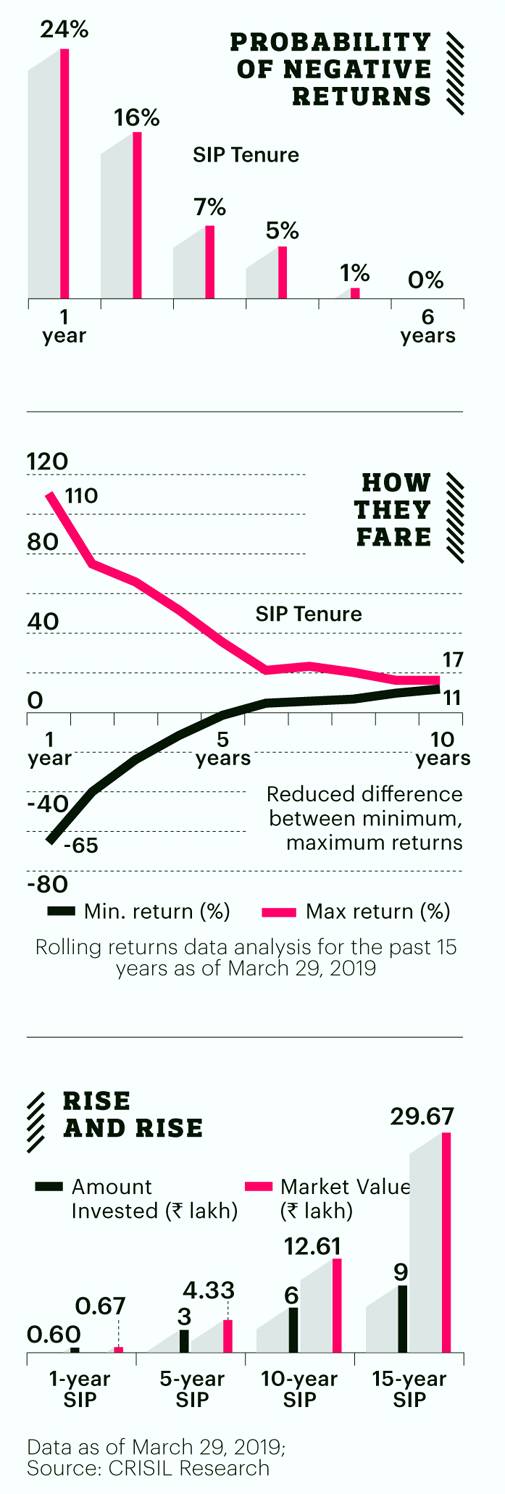Sip It, For Long

Of late, systematic investment plans, or SIPs, offered by mutual funds, have captured the imagination of individual investors in India as testified by the soaring inflows. As per data disclosed by the Association of Mutual Funds in India, the net monthly inflow through SIPs has risen progressively from Rs 3,122 crore in April 2016 to over Rs 8,000 crore as of March 2019.
With this, the overall inflow between April 2016 and March 2019 stands at Rs 2.04 lakh crore, accounting for 42 per cent of the overall net flow into equity-oriented mutual funds and 28 per cent of the overall industry. This is heartening for two major reasons. First, it adds depth to the underlying equity and debt markets, and second, it allows more investors to reap the gains thereon. However, an investor needs to remember that treating SIPs as a short-term avenue can be counterproductive.
What Are SIPs: SIP is a method of investing in a particular mutual fund scheme at a pre-decided frequency. It offers multiple benefits. First, it ensures a disciplined approach to investing as an investor puts in a small amount at regular intervals instead of a lump sum at any stage. Second, it reduces the negative impact of market volatility through rupee cost averaging, which essentially means one gets to buy more units of the fund when the underlying market is falling and vice versa, thereby averaging the buying cost per unit downwards. Third, the minimum SIP investment can be as low as Rs 500, which is another incentive for small investors to come in.
Invest in the long term: In spite of disciplined investments, investors may face capital erosion for an investment horizon up to five years. However, as the tenure increases - to six years or more - the probability of negative returns reduces to zero. In fact, the minimum rate of return for a six-year SIP is slightly more than 4 per cent and increases to a respectable 11 per cent over a 10-year horizon (see Probability of Negative Returns).

Time is money: While SIPs are a good option, one needs to continue these for a long time to derive maximum returns on investments. Given adequate time, these investments can grow and create wealth as they benefit from compounding and other advantages. An analysis of SIP investments across equity categories reveals that a monthly investment of Rs 5,000 in equity-oriented funds* over the past 15 years - totalling Rs 9 lakh - would have more than tripled to Rs 29.67 lakh (see How They Fare and Rise and Rise).
Investing in the long term also syncs with the demographic dividend. Someone starting to invest at a young age would have a greater capacity to hold it for a long time, thus benefiting from it and meeting his/her financial goals.
*Based on an index created out of large-cap, large and midcap, multicap, focussed, value/contra, midcap and small-cap equity-oriented mutual fund categories.
The writer is Director, Mutual Funds Research, CRISIL










